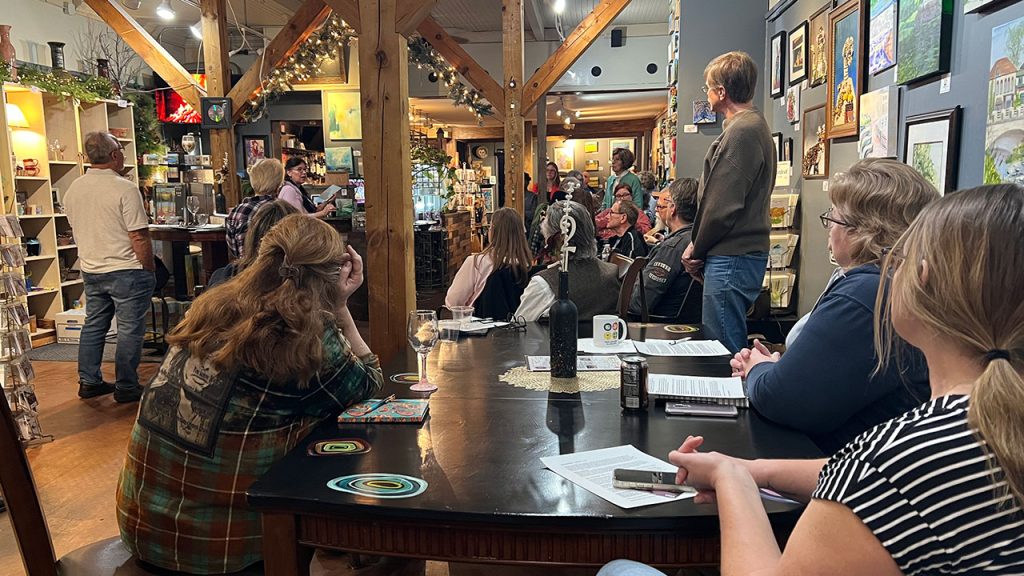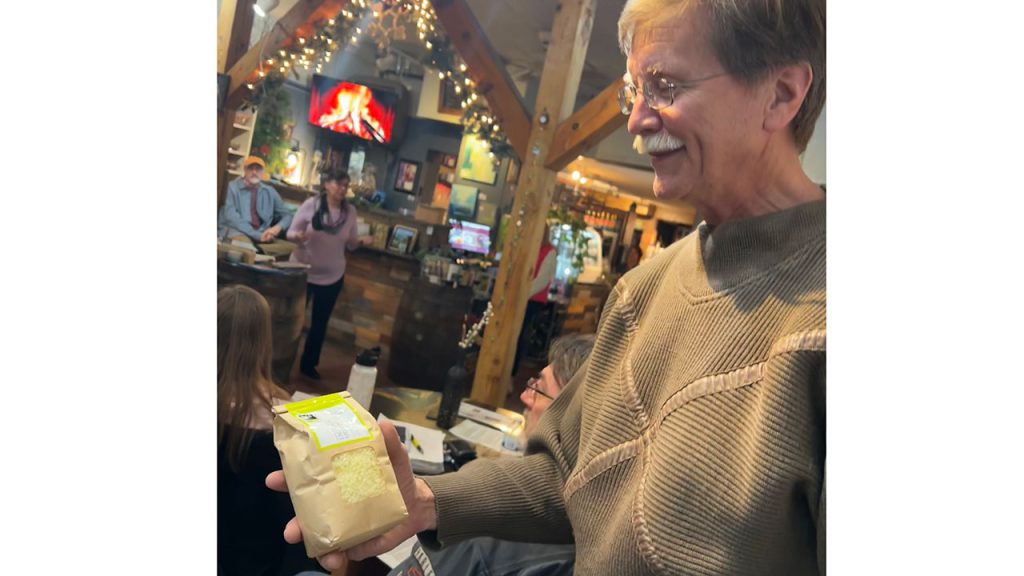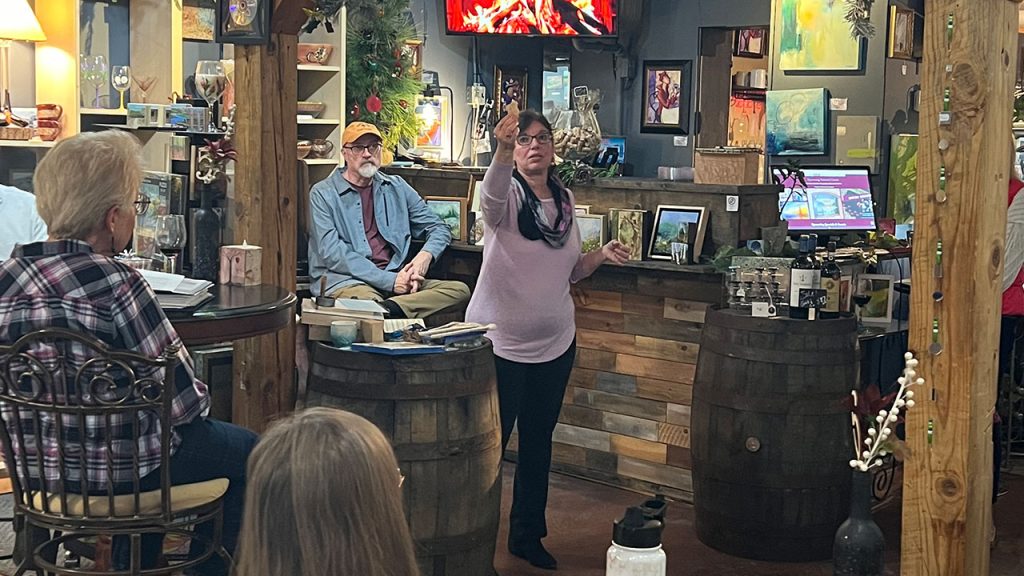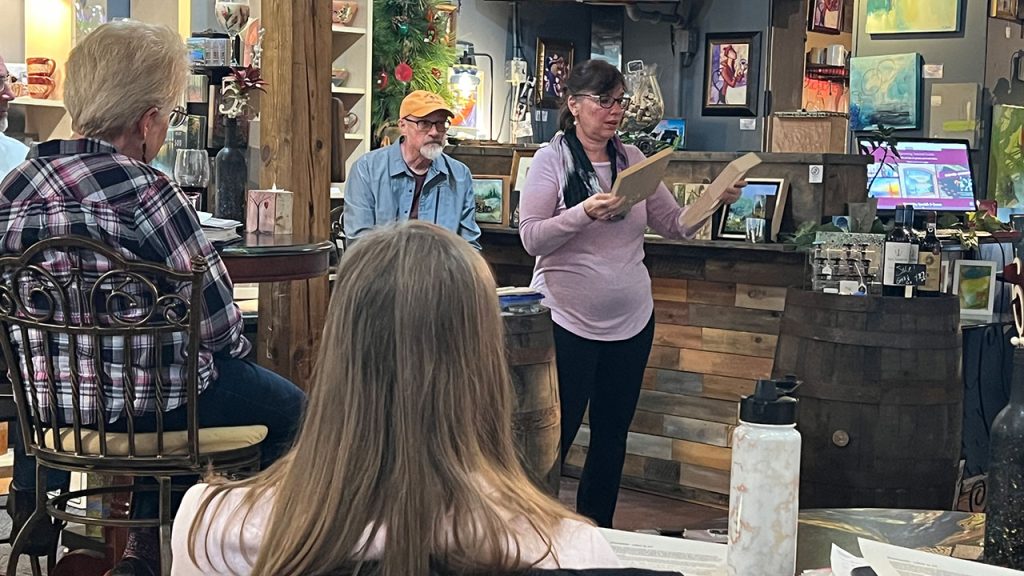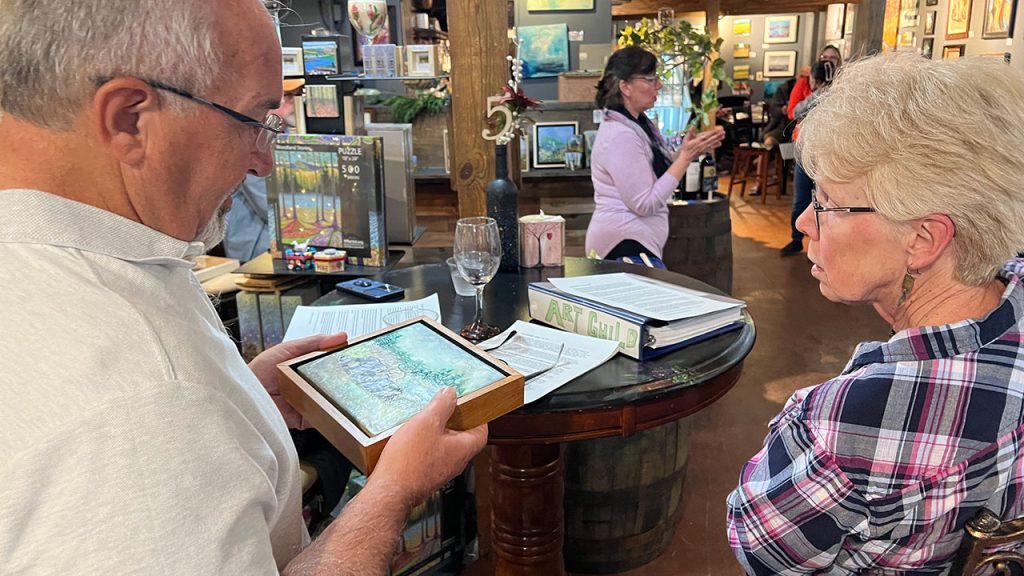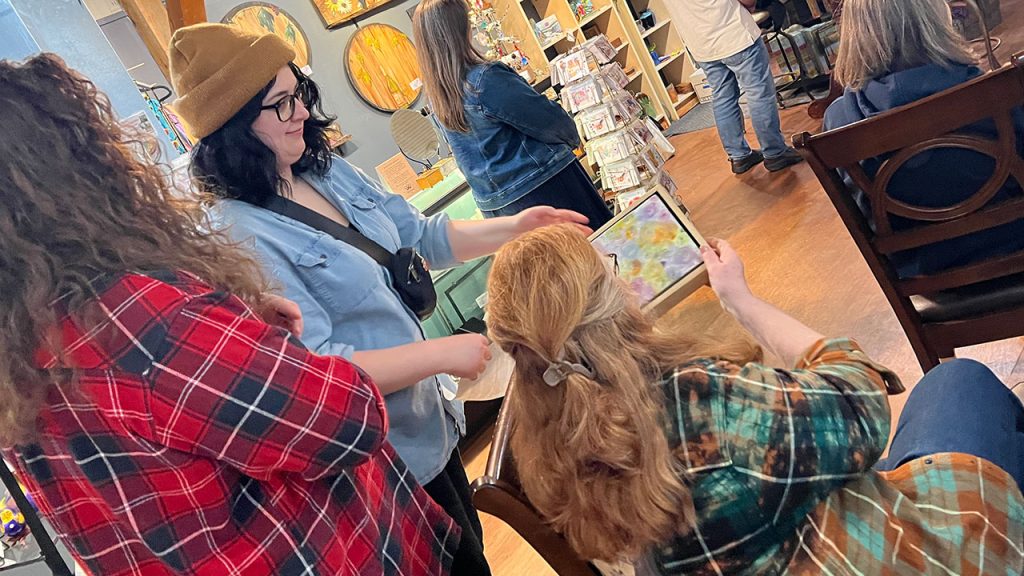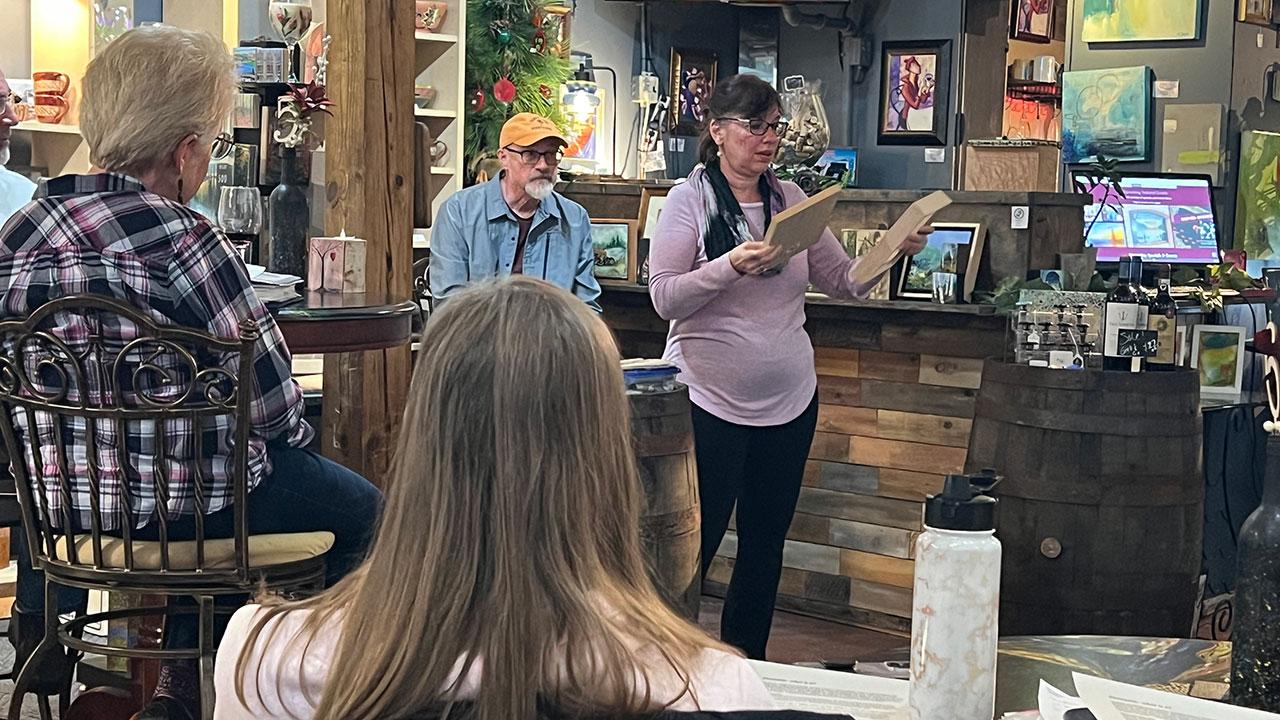Annie Cannistra is an adventurous artist who dabbles in several mediums. We asked her to speak on her experience with encaustic painting for our February 27, 2024 meeting.
Annie fell in love with encaustics because it’s very tactile. She had to try it!
Encaustic medium consists of beeswax, Demar resin and pigment. This substance is heated and applied to canvas with a brush. Demar resin is added to the beeswax to harden it by raising its melting temperature.
Annie is self-taught in this medium, learning the technique on YouTube and through various online courses. When she first started exploring encaustics, she was living in the desert. When she moved to Wisconsin she had to exercise more caution with ventilation and now works in her open garage. It’s the pigment part that requires ventilation and a mask.
You can purchase pre-made encaustic medium pellets, however it is not cheap. Most artists use a pancake griddle as a palette to melt the pellets. Small round tins are placed on the griddle to encase each color. Typically artists buy each of the ingredients (beeswax, resin and pigment) separately.
Annie has perfected her own encaustic recipe by altering the ratio of wax to resin. She mixes her own paint in silicone muffin pans and heats it to 200 degrees.
It’s important to paint with encaustics on a level workspace. Encaustics work best on an absorbent substrate making wood a popular choice. The encaustic paint is applied with a natural bristle brush. You can’t clean the brushes. They do harden up, but Annie suggests you reuse with the same color. They soften right back up with heat.
Apply several layers of paint to create a base and fuse layers with a blowtorch making them adhere to each other.
Additional creative techniques artists incorporate with encaustics include: gluing papers to the board, drawing with pastels directly on the wax (you do need to fuse in order to set them into the wax), using watercolor paper, eco printing and oil pastels. If you prefer texture versus a smooth finish, you can employ a dry brush technique. You can also achieve texture by embedding things into the wax like photo transfer or natural elements such as seashells.
Annie likes to buff her finished piece with a soft nylon cloth to shine it up and making the colors bloom. She encourages owners to buff every couple months to keep the medium from getting cloudy.
